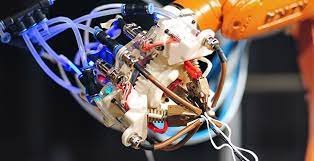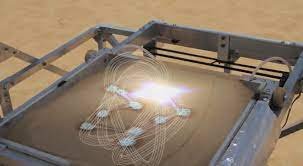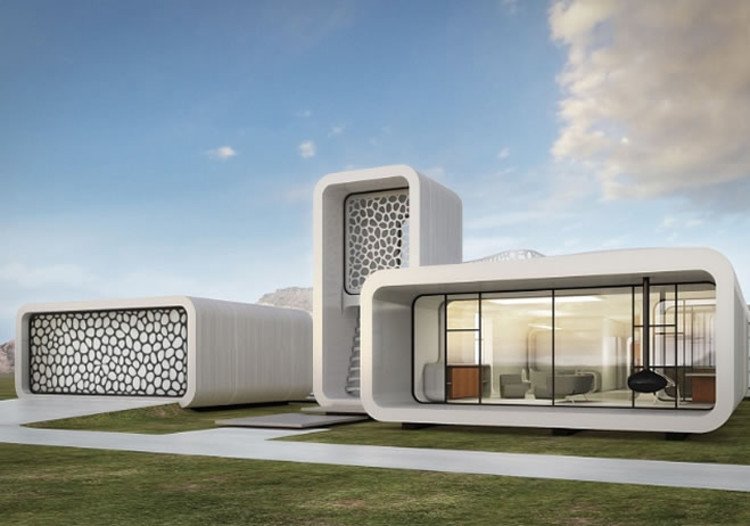Witness Dubai becoming the global hub for 3D printing
Is 3D printing the future of construction? Let’s find it out. 3D printing has been a buzz term over the past decade. Though 3D printing was initially developed for product prototyping purposes, the 3D printing technology has advanced to the point where it has emerged as a key player in a variety of industries. Recently, Vice President and Prime Minister of the United Arab Emirates(UAE), Sheikh Mohammed bin Rashid Al Maktoum has announced the use of 3D printing in Dubai’s construction sector. The decision is to make 25% of the city’s buildings using 3D printing by 2030. With this decision, Dubai has taken a crucial step in realizing its goal of becoming a regional and global hub for 3D printing. It is possible to use this innovative technology to build an entire house in just 24 hours. 3D printers are now capable of printing walls and processing cement. Additive manufacturing has had a large impact on the construction industry over the upcoming years. 3D printing technology is certainly reshaping the construction industry.
Different technologies used for construction using 3D printing
Robotic Arm Extruder
This technology is called Contour Crafting. Robotic Arm Extruder is similar to how FDM desktop printers work. Rails are installed around the building ground which will act as a structure to direct the robotic arm. The robotic arm moves within the rails and the arm will build houses layer by layer. The arm extruder moves back and forth to extrude the concrete layer by layer. Robotic Arm Extruder is the most popular technology to build XL structures.



Metal Technology for Solid Structures
Dutch Company MX3D developed Wire Arc Additive Manufacturing (WAAM) as some structures have to withstand more stress. WAAM belongs to the Direct Energy Deposition (DED) family of the Additive Manufacturing process. The need for increased manufacturing efficiency of engineering structures has led to WAAM.
WAAM lets you 3D-print metal structures with a 6-axis robot. It is executed by depositing layers of metal on top of each other until the desired shape is created. WAAM is a combination of two production processes: Gas Metal Arc Welding (GMAW) and Additive Manufacturing. GMAW is a welding process used for joining metal parts using an electric arc. The production of parts using WAAM is carried out by a welding robot integrated with a power source. The team described that “ we combined an industrial robot with a welding machine to turn it into a 3D printer that works with our own software”.
Sand 3D printing
Sand printing is more similar to industrial 3D printing techniques like SLS or Jet Fusion. Enrico Dini, an Italian architect, demonstrated a fascinating 3D printing process using a “D shaped” 3D printer. The machine spreads a layer of Sand powder before solidifying a structure layer with a binder. The sand layers are deposited in the desired thickness. The 4×4 meter machine can create large structures up to 6 cubic meters in size.

Why choose 3D printing for Construction over the traditional method?
Cost effectiveness
3D printing costs much lower than those structures built with traditional methods because of the reduction in raw material and labor. As everything is built in one place the cost of daily transportation of building material is also eliminated. 3D printers can be used for more hours as compared to the workers which will lead to fast completion of work with less material and fewer people. All these aspects can bring the price down.
Fast Production
3D printers set themselves apart from conventional development techniques. A project may take months to complete with the traditional development techniques but 3D printers can finish the same task in a day or a few. This can massively reduce the construction period. Even in the case of an emergency, fast construction with 3D printing can be beneficial as they can create structures in less time. 3D printers are automated and have construction programmed in them so they produce error-free structures. Apart from that 3D printing does not require any additional support material as the traditional method requires.
Reduced construction waste
The material used for 3D printing is more environmentally friendly. The 3D printers use very little energy and only generate about 30% of the waste as compared to a normal construction process. 3D printers use exactly the amount of material they need. Unused materials can be easily recycled for future use and this factor benefits the environment. Components are printed on-demand resulting in no wastage of material. Additive manufacturing will build a better future for the construction sector.
Enhanced design
Desired innovative solutions can be implemented quickly by using 3D printing technology. 3D printers can create intricate shapes and customize them easily. This would be super expensive if done by a traditional construction process. Thus it will help in enhancing the designing capabilities. Talking about conceptualization, a 3D model can be created to illustrate the structure and to meet the client’s expectations.
3D printed construction projects in Dubai
Dubai is now home to World’s first 3D printed office building

The Dubai Municipality used 3D printing technology to complete a two-story integrated building project with a height of 9.5 meters and a total area of 640 square meters. It is the world’s largest and first 3D printed two-story structure, completed by 3D printing directly on-site.
The two-story structure was designed and built with a variety of spaces that can be used as rooms or offices of various sizes. In contrast to the traditional method of construction, which relies on the work of tightening wooden pieces with nuts and bolts, reinforcing and pouring concrete, the walls are printed directly from the printer. Dubai Municipality had conducted numerous tests and experiments on the materials used in printing to ensure that they fit the smoothness and pumping of the printer, as well as meet the quality, consistency, and strength requirements required to withstand the construction.
Dubai Municipality becomes the World’s largest 3D printing building

3Dirigo manufactured by the University of Maine which holds three Guinness Records. It is the world’s largest 3D printed boat, largest printed object and largest 3D printer is used to create the boat. It is named 3Dirigo, a play on Maine’s motto, “Dirigo”, which is Latin for “I lead”. The boat was created in one solid piece during a nonstop printing over 72 hours. If something at this scale was to be built using the traditional process it would have taken a year to complete. The boat was printed at the school’s Advanced Structures and Composite Center for $40,000. The largest 3D printed boat is 25 feet(7.62m) long and weighs 5000 pounds. It was built in one go between 19 and 22 September 2019, from plastic and wood cellulose compounds.
Conclusion
Additive Manufacturing innovations are available not only in the construction industry, but you can also improve your production today, with us. We provide a variety of 3D printing technologies, including plastic 3D printing, resin 3D printing, and metal 3D printing. Let us make UAE a global hub for 3D printing, bring this cutting-edge technology to your company today with us. Get on a 15 min free call with our experts to suggest a more economical solution for your existing system.
Reference
https://www.manufacturingtomorrow.com/article/2019/06/the-technology-of-3d-metal-printing/13492
https://architectoutsourcing.com/blogs/pros-and-cons-of-3d-printed-construction/
